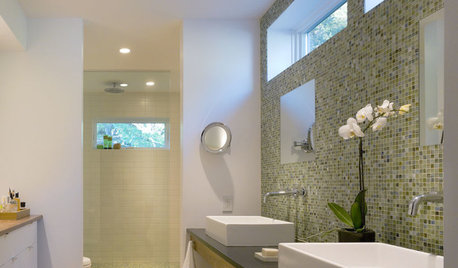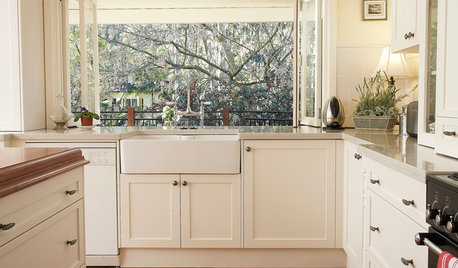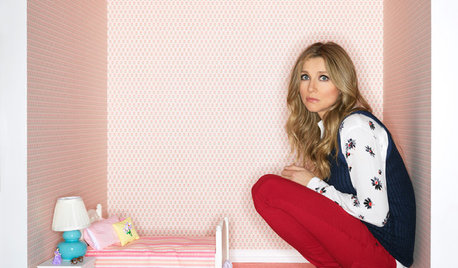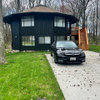I've been planning out four beds that frame my backyard for months now, and decided to run them by DW before I started. Never would have guessed in a million years she would have had such a negative reaction to the placement of elements, and I came to realize that all my calculations on three season blooming really doesn't amount to much if the plants themselves are just symmetrical things with the tall thing in the middle and sloping down from there. I'm just thinking about keeping tall things from shadowing short stuff, not the subtleties of flow and design.
As my DW is more of a 'I know what I don't like' than a 'here's how you fix it' kind of person, I need your help. I'll submit my beds to you, and I'd be eternally grateful if you could give me ideas on how to arrange them, better color groupings (or choices), or even plant alternatives if you feel I've made a big mistake. Thanks so much!
Bed 1. 7x25, northern edge of the neighbor's garage and under a 50 foot oak tree. Around 1-2 hours of direct sun a day, plus plenty of dappled light. There's already a forsythia I want to keep taking up a 4x4 space on the western edge. What I'm proposing is to put a Calycanthus floridus/sweetshrub towards the eastern edge to balance out the forsythia, and replace the English ivy with corydalis lutea.
Bed 2. Just northwest of bed 1, it's a 15x4 shade bed under the same 50 foot oak, and on the east side of my house. Gets more sun than bed 1 just by virtue of not being on the north face of a building, but not much more. Centered in the bed is my A/C unit, and my kitchen looks down on this bed. I was going to use Virginia Bluebells, Hardy Plumbago, Lily of the Valley, Johnson Blue Geranium, Hosta, Dark purple columbine, and a couple purple tricyrtis to create a purple/blue theme surrounding the A/C in the following order:
H=Hosta, C=Columbine, T-Tricyrtis, x= A/C unit, X= blank space, B=Bluebells, G=Geranium, P= Plumbago, and L= Lily of the Valley.
HHHHCCCCTTTTXXXXXXTTTTCCCCHHHH
HHHHCCCCTTTTXXxxXXTTTTCCCCHHHH
HHHHCCCCTTTTXxxxxXTTTTCCCCHHHH
HHHHCCCCTTTTxxxxxxTTTTCCCCHHHH
BBBBBBBBBBGGxxxxxxGGBBBBBBBBBB
BBBBBBBBBBGGGxxxxGGGBBBBBBBBBB
PPPPPPPPPPPGGGxxGGGPPPPPPPPPPP
PPPPPPPPPPPPGGGGGGPPPPPPPPPPPP
PPPPPPPPPPPPGGGGGGPPPPPPPPPPPP
LLLLLLLLLLLLLLLLLLLLLLLLLLLLLL
Bed 3. 4x25 bed on the south side of my garage. Gets a tiny bit of shade from the 50 foot oak and my house to the west, but probably gets 5+ hours of sun a day. I was going to mix yellows and blues in this bed, as I already have a couple Stella d' oros and a yarrow in need of splitting. I wanted to add a viburnum juddii as a central element, but was vetoed, as DW doesn't like the idea of a single central bush, and it would block the view of the rest of the bed from the kitchen window. I was planning to use Stella d' Oro, balloonflower, yarrow, baptisia, some yellow dwarf Gaillardias, iris cristatas, daffodils, Muscari, yellow crocuses, and maybe scilla to create a long season of flowering, with high-scent plants when I could. S=Stella d'Oro, B=Balloonflower, Y=Yarrow, b=Baptisia, I=Iris, G=Gaillardia, D=Daffodil, M=Muscari, s=Scilla, and C=Crocus.
XXSSSSBBBBYYYYYYbbbbbbbbYYYYYYBBBBSSSSXX
XXSSSSBBBBYYYYYYbbbbbbbbYYYYYYBBBBSSSSXX
XXSSSSBBBBYYYYYYbbbbbbbbYYYYYYBBBBSSSSXX
XXSSSSBBBBYYYYYYbbbbbbbbYYYYYYBBBBSSSSXX
GGXIIDDDDDIIDDDDDIIGGIIDDDDDIIDDDDDIIXGG
GGMsMCMsMCMsMCMsMCMGGMCMsMCMsMCMsMCMsMGG
Bed 4. Last but not least, this bed is on the far east side of my lot under 4 100+ foot trees, and most of it is full shade, save for an 8x5' fence on the southern end that is part shade. It's large, like 8x35, but because it's shade, little other than hostas will grow there. I was planning on just dropping in a couple of clethra, Virginia bluebells, forget-me-nots, trout lily, hardy Plumbago, and lilies of the valley and see what survived down there. For the part shade fence, I thought that a Clematis terniflora (paniculata) and a Silver Lace vine might look good twined together, and could colonize the tree that the fence leans against.
Any thoughts on how I can add landscape design elements to this or make it otherwise look/act better?


















oilpainter
tkhooper
Related Professionals
Maple Valley Landscape Architects & Landscape Designers · East Rancho Dominguez Landscape Architects & Landscape Designers · Kyle Landscape Architects & Landscape Designers · Harvey Landscape Architects & Landscape Designers · Pelham Landscape Contractors · Stamford Landscape Contractors · Brandon Landscape Contractors · Fruit Heights Landscape Contractors · Mendota Heights Landscape Contractors · Parker Landscape Contractors · Point Pleasant Landscape Contractors · Seymour Landscape Contractors · Del City Decks, Patios & Outdoor Enclosures · Valinda Swimming Pool Builders · Randolph Swimming Pool Builderskarinl
carduusOriginal Author
duluthinbloomz4
carduusOriginal Author
karinl
carduusOriginal Author
reyesuela
carduusOriginal Author
reyesuela
carduusOriginal Author
reyesuela
timbu
carduusOriginal Author
carduusOriginal Author
timbu
dsb22
reyesuela